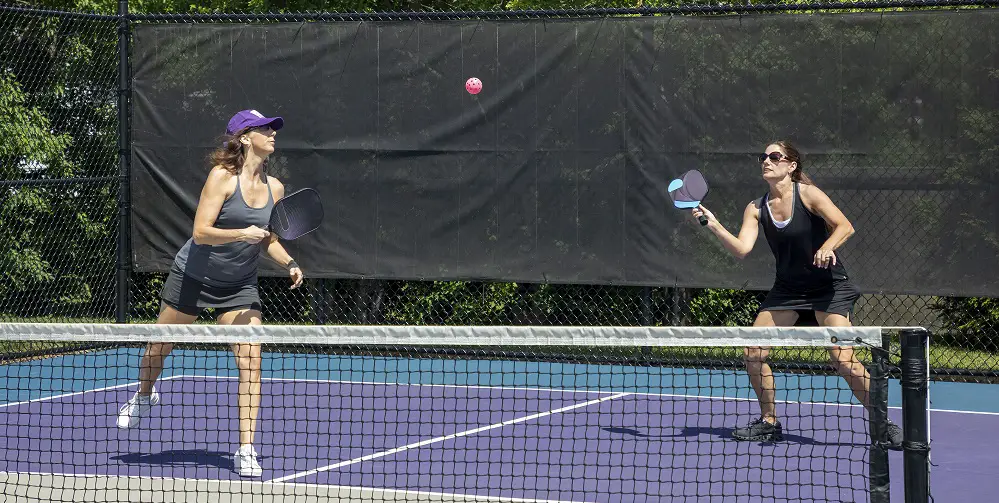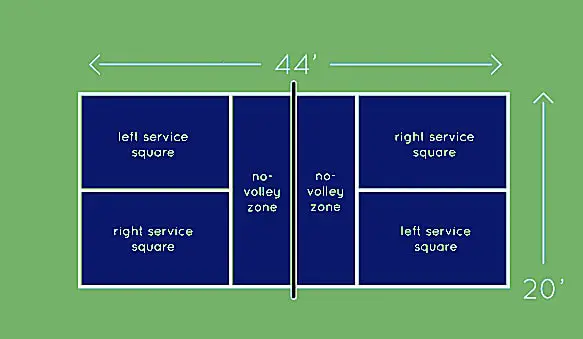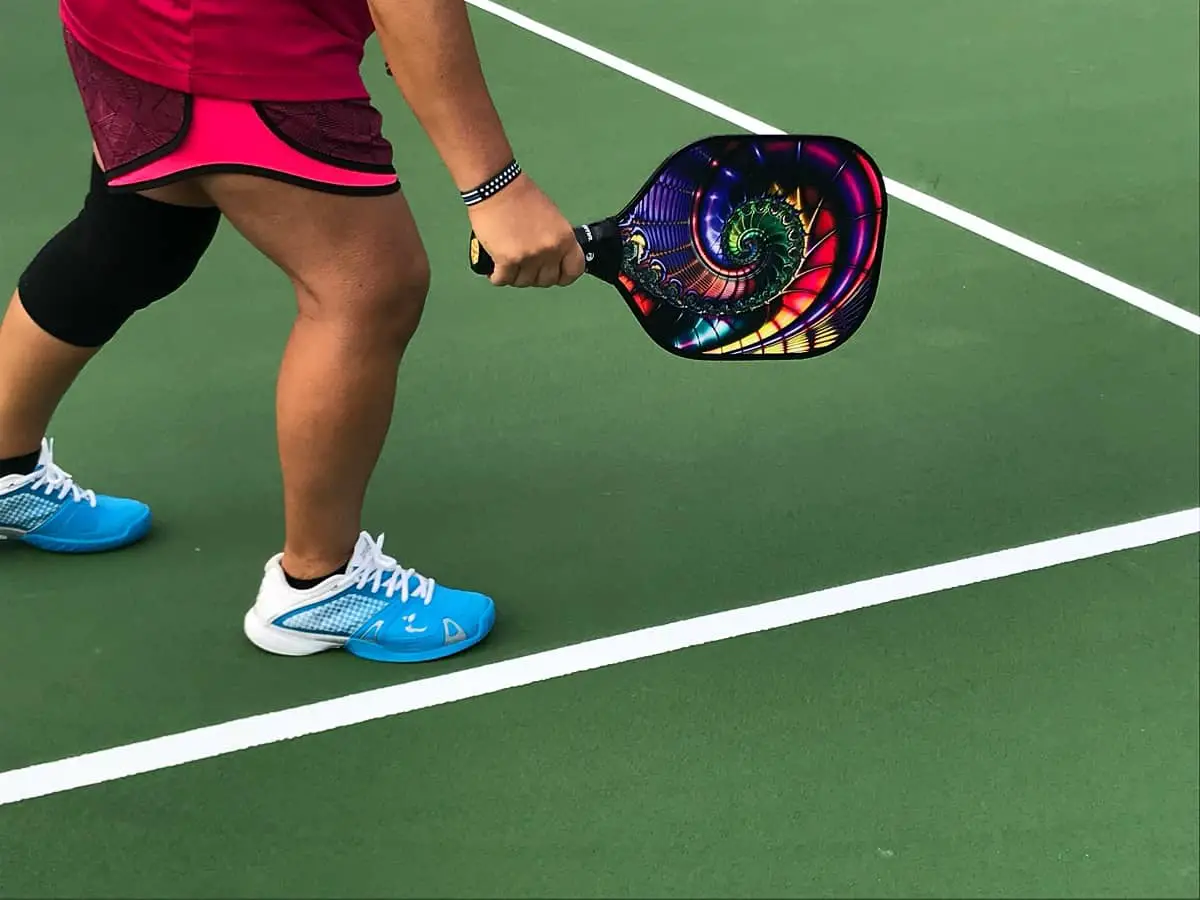Pickleball is a terrific ball game, somewhere between tennis, badminton and ping-pong but if you are looking to understand the exact Pickleball rules, here’s an ultimate resource guide.
Previously, we’ve told you all about the game, pickleball’s famous players, the celebrities who promote or play pickleball, where it is played and the equipment that is needed.
What we haven’t yet told you are the pickleball rules, originally decided upon by the original pickleball players but since confirmed by the United States Pickleball Association – USAPA.
Below you will find all the pickleball rules and how to play pickleball. If you are playing Pickleball seriously, you need to follow them. If you are a new pickleball player, you need to learn and understand them, which you can do while playing the game.
Table of Content
The Basics of Pickleball
To play pickleball you need access to a pickleball court (many tennis clubs around the USA have converted tennis courts to Pickleball courts), a pickleball paddle or two, and a pickleball itself. (information how to buy pickleball equipment here)
You need an opponent for singles, therefore two players in total, and four players for doubles. There are Pickleball singles, doubles and mixed doubles. Players should wear a pair of sports shoes and general sports/tennis attire.
The Rules of Pickleball
The rules of Pickleball come from the USAPA and have been adapted by the ITP, the International Pickleball Federation. A rule-book can be downloaded off the internet and there are also videos available for download too. Here we explain some of the basic rules associated with pickleball:
- A Pickleball court must be 20 feet wide and 44 feet long.
- There is a specially designed net in the middle of the court, dividing it into two halves. The net is 34 inches high in the middle and 36 inches high on either side.
- The same size area is used whether players are playing singles or doubles, and the rules are the same for both games.
- The players will toss to see who serves first / chooses a side.
Also Read:
The Server
The game is started with the one player serving. The first serve is always from the right hand side of the court. The serve is underhand; the paddle and the ball must connect below the pickleball server’s waist.
According to the official rule-book, an underarm serve in pickleball is defined as the following:
“The arm must be moving in an upward arc and the paddle head shall be below the wrist when it strikes the ball.”
The player must serve diagonally, and the ball must land on the other side of the court within the lines.
The server cannot move his feet across the baseline of the court until he or she has served.
Unlike tennis, the server only has one serve per point. The rule allows for a second ball only if there is a let ball, i.e., the ball skims the surface of the net and lands inside the court.
When the server wins, he or she switches sides and serves again from the left hand side of the court. The server keeps serving until the serve is lost or he or she makes a fault.
When the singles server loses, the singles opponent will then have a chance to serve.
When the doubles server loses, the partner serves, until a point is lost meaning the opposition will then serve.
Servers serve from the right hand side of the court if the score is even, and from the left hand side of the court if the score is odd.
The Receiver
The receiver must stand in the court to receive a ball. He or she must hit the ball back in the court. A Pickleball rally can go on for as long as it takes, as long as the ball stays within the court.
The ball must always bounce once before it is returned, by either player for the first two balls in a game. Unlike tennis, where a game can be a serve / volley short game, this rule somehow ensures the game / rallies are longer.
One the ball has bounced once on either side of the court (after the serve and after the return) the players can volley, smash or use every day one-bounce ground strokes.

Scoring in Pickleball
Funnily, scoring is the toughest part of understanding pickleball rules. Which is why we have an in-depth guide on pickleball singles and doubles scoring here which you can refer to, to get in-depth knowledge about how to keep a tab on the scores.
Volleys and Smashes
There is a non-volley zone which is on either side of the net within seven feet. This too extends the length of the game. Being a smaller court, being too liberal with volleys or smashes would make the games too quick.
If a player breaks the rules with volleys or smashes it is considered to be a fault.
The player is also not allowed to step into the non-volley zone when doing a volley or smash.
The non-volley zone is only off limits for volleys and smashes.
Also Read:
Points and Games
Games are played up to 11 points and must be won by two points. Tournament games can be played up to 14 or 21 points, with a win of two points.
The points are only won by the serving team – if a server wins a serve, he or she gets the point. If he loses a serve, nobody gets the point.
Once the players have reached 11 points (or more, game depending) a new game is started by the winning player / players, with just one serve, before the receiving team takes over.
Pickleball Line Rules
A serve that is within the non-volley zone is considered to be out and therefore a fault. If a ball makes contact with the line of the court, it is considered to be in.
Any rule violations result in faults.
Faults by the receiving team result in the server’s point. Faults by the severing team result in the loss of serve and a new server.
What is the Kitchen Line or the Kitchen Zone?
The Kitchen is a oft-used term for the non-volley zone or non-volley line. In this section we will be interchangeably using the terms kitchen zone or the non-volley zone.
The most important rule a player cannot volley from the kitchen zone or when the player is touching the kitchen line. The volleying can happen only from outside the kitchen zone and when the player isn’t touching the kitchen line.

Here’re some of the rules associated with the Pickleball Kitchen
- As mentioned earlier, players cannot volley from the non-volley zone or when the feet are touching the non-volley line.
- While hitting a volley, both feet must be touching the surface outside the kitchen after and after hitting the volley.
- No part of the player’s body or anything that’s a part of the player can touch the non-volley zone while volleying.
Kitchen Zone or Non-Volley Zone FAQs
Q. Can a player enter the kitchen zone in pickleball before the ball has bounced?
A. Yes, a player can enter the kitchen zone or the non-volley zone before the bouncing of the pickleball.
Q. Does a player need to get out of the kitchen zone immediately after going in?
A. No, a player can remain in the kitchen zone for as long as he/she wants. The only restriction is the player cannot volley when in the kitchen zone.
Q. In doubles pickleball, can both players remain in the kitchen at the same time?
A. Yes, both players can remain in the non-volley zone at the same time as long as they don’t play a volley from within the kitchen zone.
Other Lesser Known Pickleball Rules
- Players cannot touch the net. Either players or any part of their equipment or clothing cannot touch the net, and if that does happen it will result in an automatic fault.
- Heard of the newly-introduced Time Clock in tennis to speed up play and avoid time-wasting? Well, something similar has been with pickleball throughout. Both, the server and the receiver need to be ready within 10 seconds of the previous score been called.
- Player or teams cannot attempt to distract opponents with any tactics, like communicating very loudly, and this includes stamping feet heavily on the court, screaming at the opponent during a rally or anything similar deemed to be distracting by the referee.
- On serve, the ball must clear the non-volley zone, or what is also called the kitchen zone. If it falls in the non-volley zone or even hits the non-volley line, it is a fault.
Pickleball in General
While the Pickleball rules may sounds a little complicated, they are quick and easy to master. There are several Pickleball videos that a player can watch (many Pickleball players themselves have created online tutorials) and there are Pickleball coaches.
If you do not have a Pickleball coach, you will quickly learn from your partner or your opponents, and by downloading a rule book.
Pickleball tournaments are serious and the rules are rigorous, as they would be in tennis or badminton tournaments. If you are playing Pickleball for fun, you will easily learn the rules along the way.
Also, if you are looking for beach tennis rules, click here, and for headis rules, click here.


